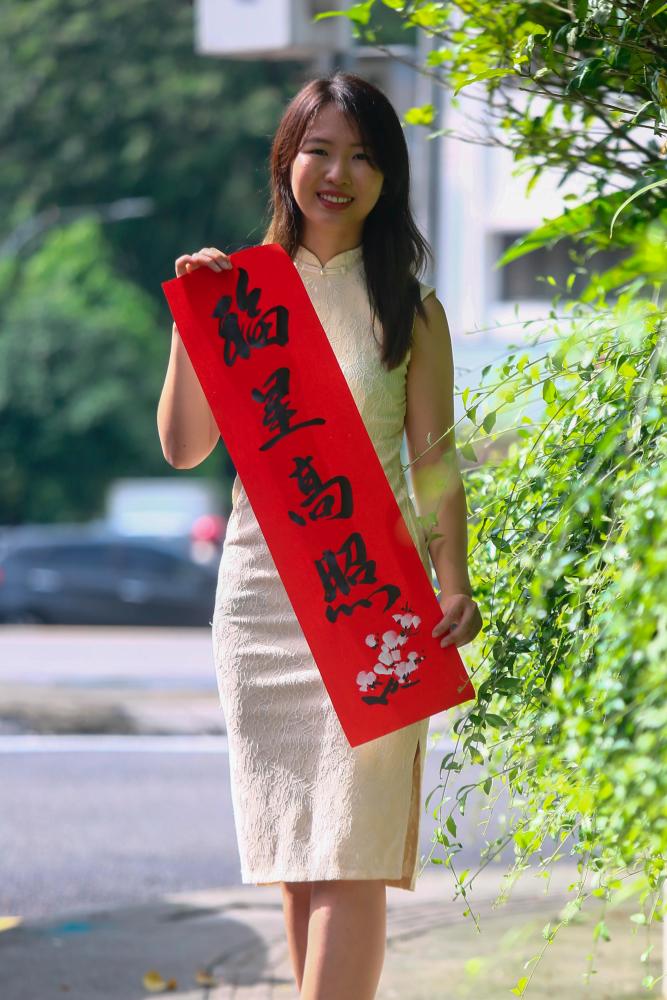FOR Sim Li Wei, a Chinese brush painter since she was 10 years old, paintings connect deeply with her soul. Each stroke is a journey into self-discovery and an opportunity for expression. Over the years, Sim, who hails from Klang, has completed an incalculable number of paintings on various canvases.
With music in the background, Sim, 30, takes just 10 minutes to paint a mesmerising image of peonies, birds and butterflies. In her art, she often blends the traditional with contemporary elements.
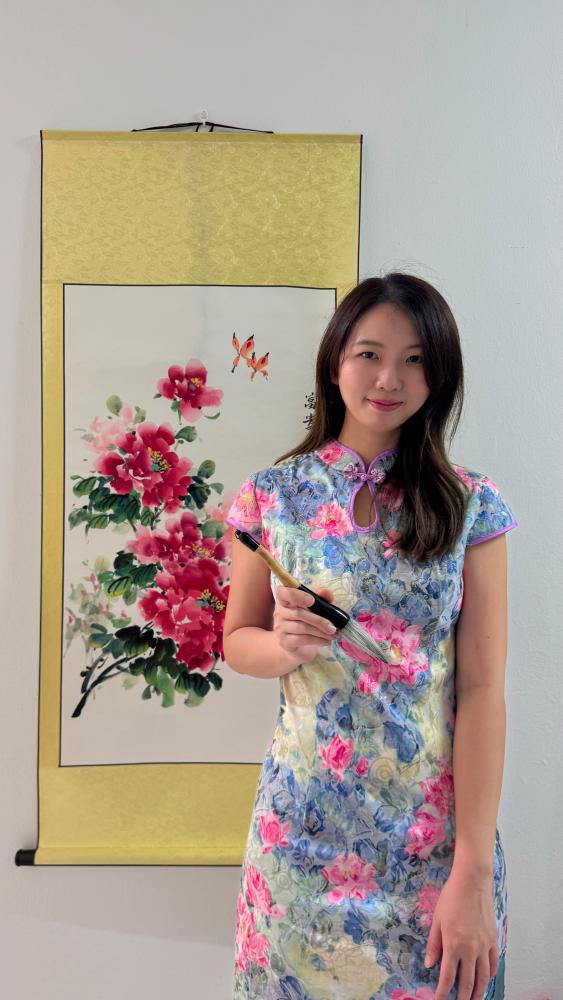
Deeply connected to soul
“Chinese brush painting has taught me the importance of simplicity, the value of patience and mindfulness. Each stroke is deliberate and must reflect a deep connection to the subject, whether it is a flower, bird
or landscape.
“The process encourages me to slow down, focus and express emotions through the flow of the brush, rather than relying
on perfection.
“It connects with my inner self by fostering a sense of calm and balance. The quiet, meditative nature of the practice helps me reflect internally, allowing me to express my thoughts and feelings without words. This makes the painting not just an external creation, but a personal journey of self-expression and discovery,” Sim told theSun.
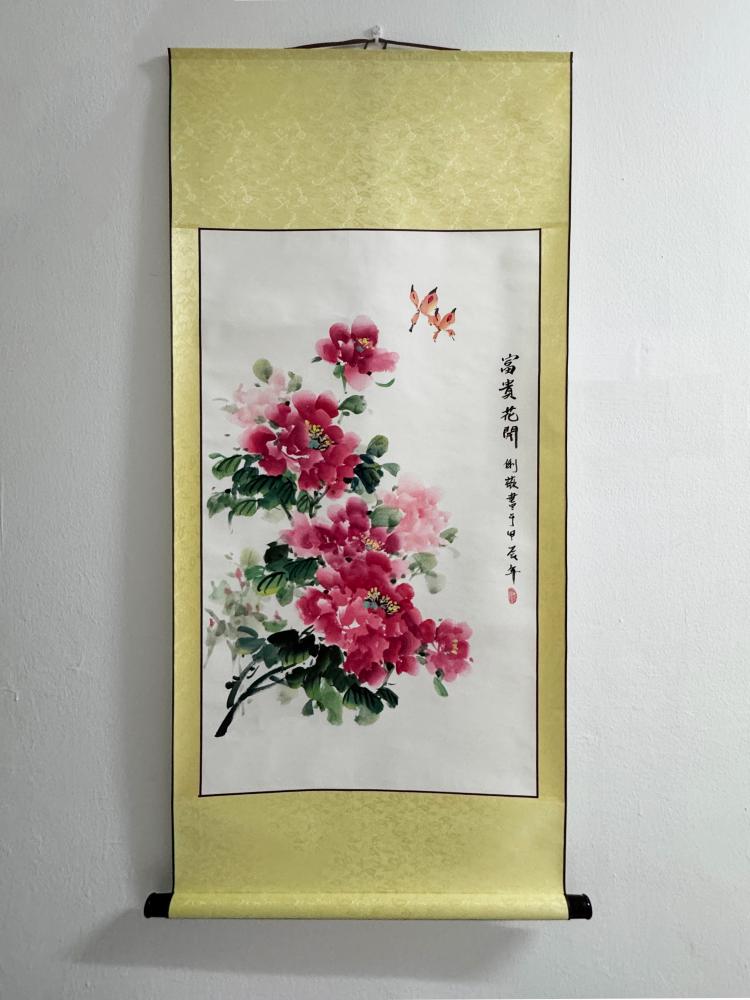
Passion to paint
Her artworks allow her to connect deeply with tradition and nature.
“I love using watercolors and pencil sketches in my work to bring out delicate details and vibrant colours while maintaining the fluidity and simplicity that Chinese brush painting is known for.
“The technique itself is unique because it combines calligraphy with painting, where each brushstroke holds meaning and emotion. It is all about capturing the spirit of the subject, whether it is a flower, bird or landscape, rather than just a realistic representation,” she explained.
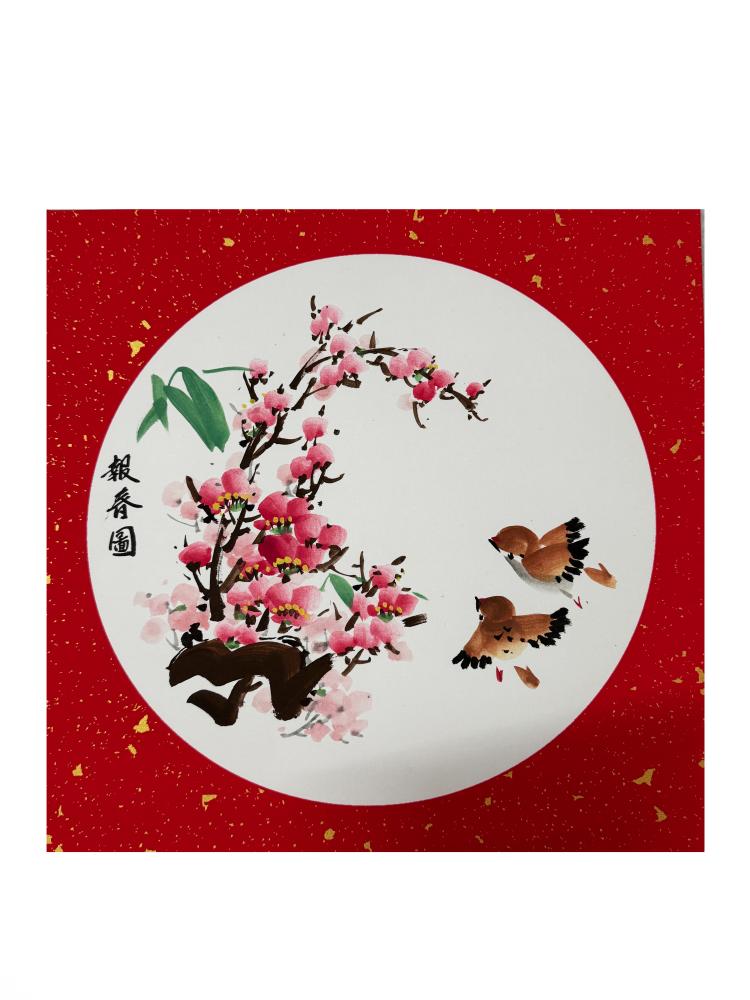
Birds, butterflies, flowers
“Flora and butterflies have always been a major focus in my work because they symbolise life, beauty and transformation. The delicate details of flowers and the fluid motion of butterflies offer endless inspiration and I love how they evoke feelings of grace and freedom.
“However, I have also explored other themes such as mountains and rivers, which represent nature’s strength and tranquility, as well as human figures that capture emotion and storytelling through brushstrokes,” she said.
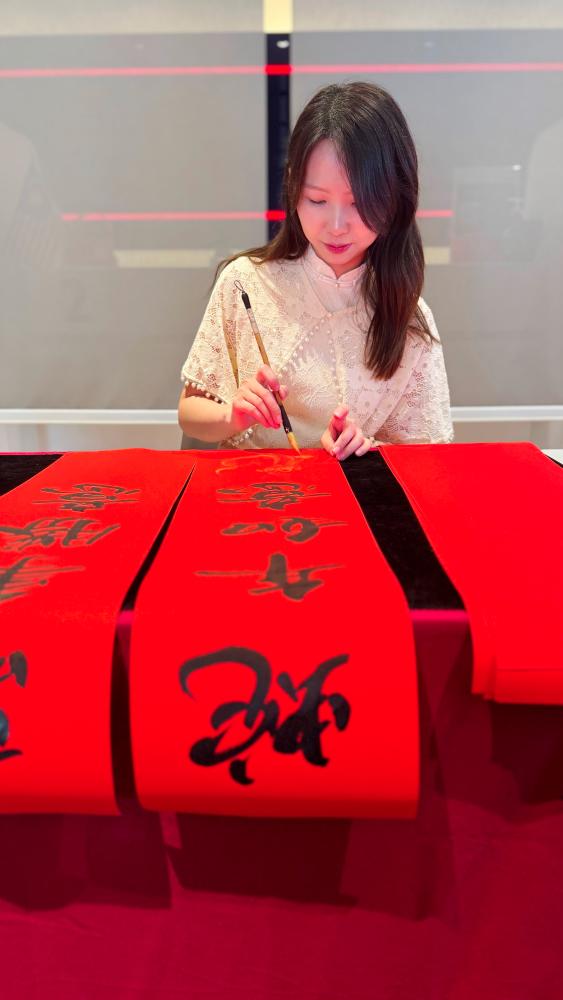
Traditional and contemporary
Unlike many traditional painters, Sim experiments by bringing together different elements.
“I enjoy blending traditional Chinese brush painting with more modern or contemporary elements. While I deeply respect the classical techniques and themes, I think it is exciting to experiment with different media such as painting on fans, lanterns or red paper.
“These materials bring a fresh perspective to the art and I find that they make the work more accessible to a wider audience.
“By using these traditional techniques in a modern context, I can keep the art alive and relevant while also introducing people to the beauty and depth of Chinese brush painting in a fun and engaging way. It is all about striking that balance between tradition and innovation,” she said.
Apart from this, she also dabbles in Chinese calligraphy and hopes to experiment with rainbow painting. “It is all about continuing to evolve and explore new ways to combine traditional and contemporary elements.”
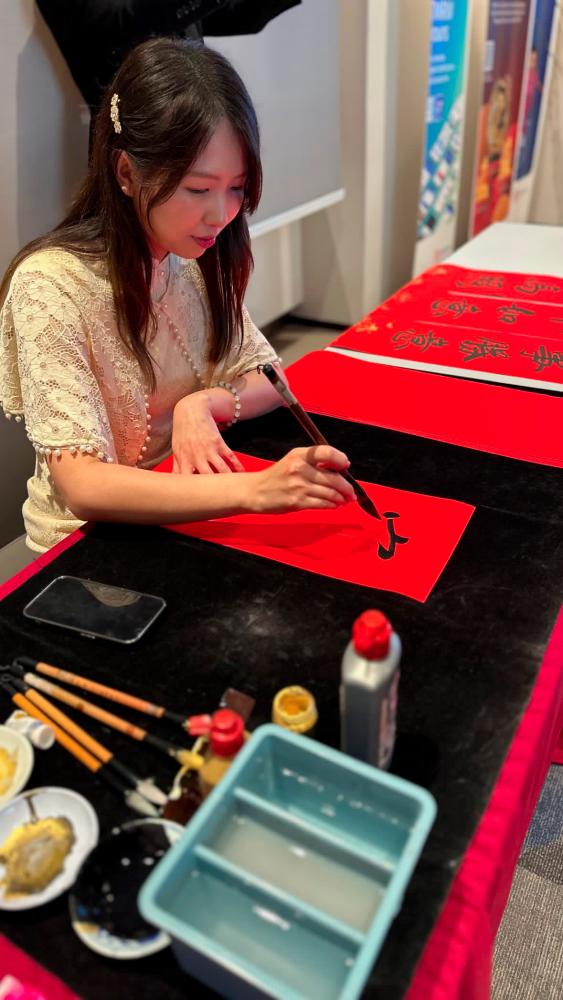
Melodic inspiration
Music plays a significant role in her painting as it sparks ideas she skillfully transfers onto canvas. She often listens to music while painting – sometimes, she dances a little too.
“Music is integral to my creative process in Chinese brush painting, helping to create flow and rhythm in my strokes. Traditional Chinese instruments such as the gu zheng or erhu set the mood, allowing me to align my brush movements with the music’s fluidity.
“This creates a meditative, almost dance-like quality in the painting. I also listen to ambient or classical music for focus, letting the rhythm guide my brush and enhance the connection to the subject,” said Sim.
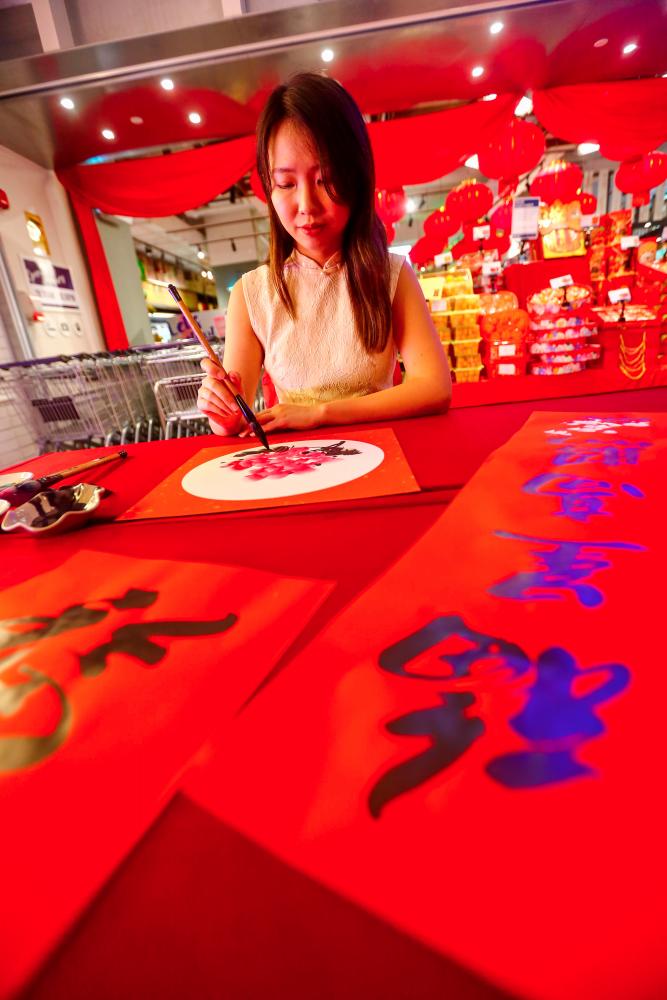
Colours of life
Sim took interest in painting when she was young, as her father is an artist who teaches Chinese
brush painting.
“I was fascinated by how a few simple brushstrokes could create such beautiful and expressive works of art.
“He patiently taught me the basics, and over time, I grew to appreciate the depth and tradition behind this ancient art form. It felt like a way to connect with my heritage and express emotions through each brushstroke. That early exposure not only ignited my passion but also gave me a lifelong appreciation for the art.
“We often worked in a performance setting, in which I had to finish a drawing in 10 minutes while music was played by my sibling in the background.
“The rhythm of the music guided my strokes, helping me stay focused and create quickly without overthinking. The challenge was balancing speed with expression, trusting my instincts and making quick decisions. The fastest I have completed a piece is around 10 minutes but I focus more on the impact of the work than just
finishing quickly.
“I had to focus solely on capturing the essence of the flower quickly, using fluid, expressive strokes while maintaining the balance of colour and form. The energy of the live setting and the challenge of finishing in such a short time made it an exhilarating, one-of-a-kind artistic moment,” she said.
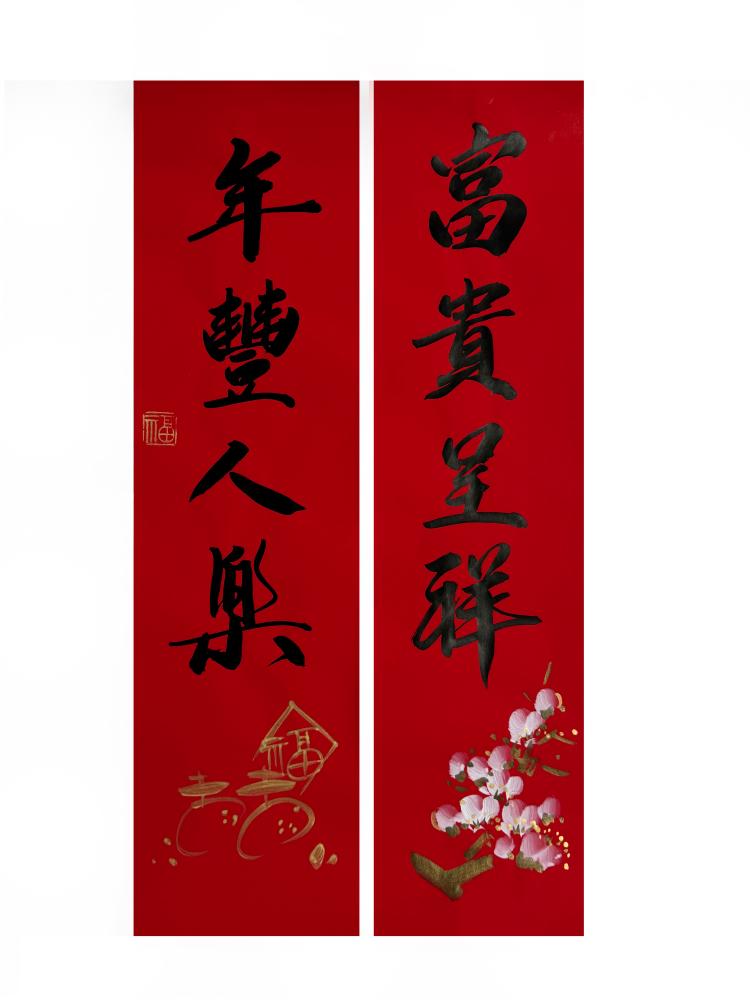
Art influences work
Besides Chinese brush painting, Sim, an architect, is fascinated by the charm of heritage homes and buildings.
“As an architect, Chinese brush painting influences my building sketches by encouraging more fluidity and spontaneity.
“The use of thin and thick strokes reflects the texture and form of old buildings, while empty spaces invite reflection, much like the blank areas in brush paintings.
“I always focus on capturing the essence and mood of a building rather than exact details, allowing space for the viewer’s imagination, just as old buildings tell their stories through what is left unsaid,”
she explained.
Preserving ancient art
She feels it is important to keep the ancient art alive and hopes the new generation learns from her Chinese brush painting.
“Keeping ancient art such as Chinese brush painting alive is crucial because it connects us to cultural heritage, tradition and the wisdom passed down through generations. It teaches us not only artistic skills but also values such as patience, mindfulness and the beauty of simplicity.
“I hope the new generation learns Chinese brush painting is not just about technique but also expressing emotion, connecting with nature and understanding the balance between effort and letting go,” she added.



